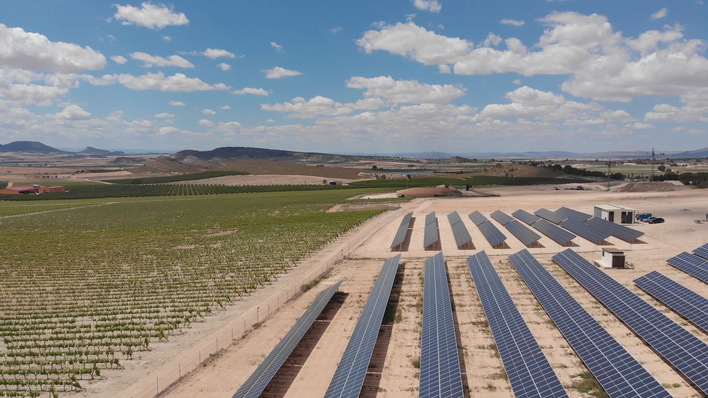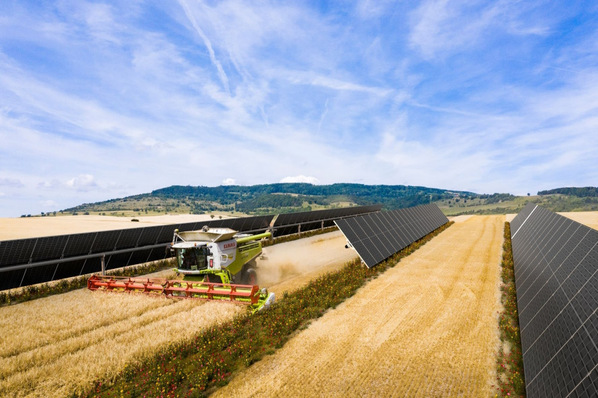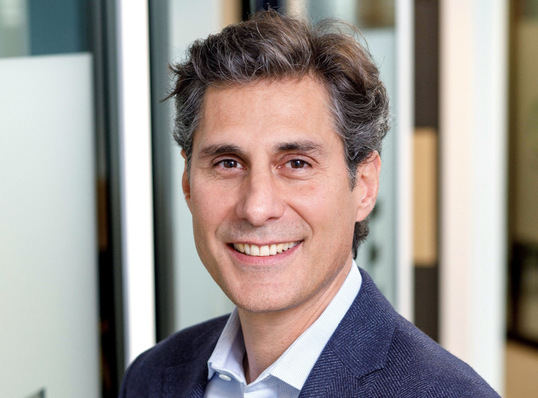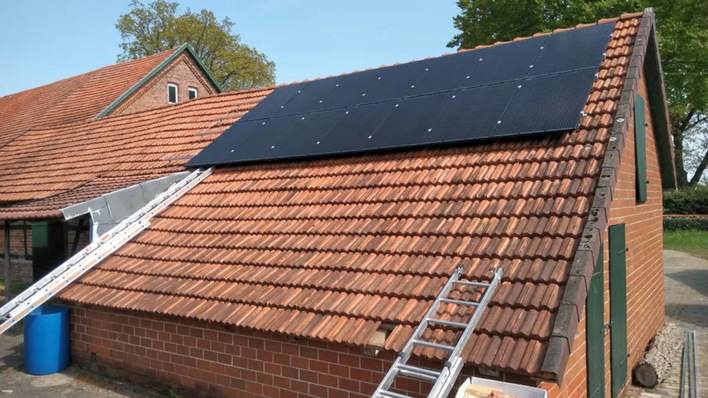With a calculated annual generation of 15 gigawatt hours (GWh), 7,000 tons of CO2 emissions can be avoided in the region every year in the future.
Recently the groundbreaking ceremony was held on Hubert-Alexander Bechinger's organic farm on the outskirts of Rickertsreute for the ambitious project, which, in addition to regenerative energy generation for several thousand people in the region, also focuses on biodiversity and species-appropriate animal husbandry.
Promote biodiversity
The plant is being built for the investor Bechinger e-Energie GmbH. The ground-mounted PV system is being constructed in such a way that flowers, grasses and herbs can grow on the underlying meadow in the future, which would not have a chance if the land were cultivated conventionally.
At the same time, the solar modules provide additional protection through shading and reduce evaporation. And finally, a flock of sheep will be available in the future to maintain the greenery on the land.
Solar project for sustainable energy supply in the region
"The aspect of sustainability and biodiversity has long been an essential part of our activities here at the organic farm," says Hubert-Alexander Bechinger, managing director of Bechinger e-Energie GmbH and owner of the Rickertsreute organic farm. "Next to our bee-flowering meadows and mixed forests, the next logical step was quite clear: We have to make our energy consumption more sustainable."
To realize this plan, Hubert-Alexander Bechinger called on the experience and expertise of Sens. In this case, the PV specialists from Würzburg not only build the PV systems and the storage unit, but also take care of the construction of the medium-voltage cable route for the grid connection of the system in coordination with the municipality, the Zweckverband Breitband- Bodenseekreis and the Stadtwerke am See. This approximately 2.5-kilometer-long line ensures the distribution of the locally generated green electricity between the localities of the district.
Particularly powerful PV modules in use
The groundbreaking ceremony marks the first step in the realization of the 12-hectare ground-mounted PV plant. In addition to the benefits for local flora and fauna, it is also characterized by the use of bifacial modules, which are particularly high-yielding. Bifacial means that not only the direct incidence of light on the front of the modules is converted into energy, but also the indirect, reflected solar radiation on the back of the modules.
Get our free download: Special:How to activate agricultural areas to produce solar electricity
The plant thus has a total output of 12 megawatts (MWp). It is planned that the plant will feed green electricity into the local grid from October. In addition, there are two rooftop PV systems on the barns of the organic farm, which provide a further 307 kilowatts (KWp). Together, all three systems generate 15 GWh of green electricity per year. With this amount of electricity, it is calculated that about 3,500 to 4,000 average households can be supplied with electricity for a year and 7,000 tons of CO2 emissions can be permanently saved.
Completion by February 2023
The entire system, including electricity storage with a capacity of up to 10 megawatt hours (MWh), is scheduled to go into operation by February 2023. SENS is implementing the project as general contractor
"This project is not only a special project for the region around Lake Constance, but also for Sens. We can demonstrate here our core competence as a partner in the implementation of more complex projects with multiple, interconnected technologies and realize a regionally unique project through the combination of PV plants and storage system," explains Fabian Herr, COO of Sens. In the coming months, the Sens team will now ensure that the Lake Constance district can benefit from the locally generated renewable energy as quickly as possible. (hcn)
Did you miss that? Ecological research at Longfield Solar Farm







